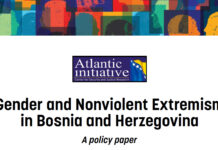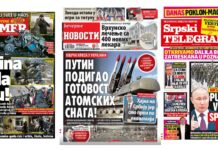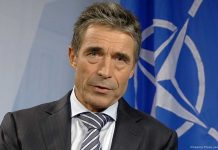The allies reach out to the Kremlin, and start to think about the unthinkable
IN THE heart of NATO’s military headquarters, SHAPE, near the Belgian city of Mons, an unspoken revolution is taking place: planners are thinking about how to defend eastern European members from Russian attack. For years after the cold war, the orthodoxy was that Russia did not pose a threat, so NATO did not need to draw up contingency plans to protect newer members, such as the Baltic states.
That has now changed, NATO officials say, though nobody wants to speak about it publicly. Anders Fogh Rasmussen, NATO’s secretary-general, puts it obliquely. “We have all necessary plans in place to defend and protect all allies. I think the Russians would be surprised if we didn’t. That’s the core purpose of the alliance.”
This realignment comes as NATO is rethinking its role. Mr Rasmussen will present a draft of NATO’s new blueprint, known as the “strategic concept”, to ministers in the autumn. A final version will be approved at NATO’s Lisbon summit in November. It will attempt to capture the lessons of the war in Afghanistan, such as the need for a “comprehensive approach” to co-ordinate military operations with economic reconstruction and political action. But the strategic concept is also an attempt to look beyond Afghanistan, as NATO countries think about how to pull back from combat there.
Indeed, with Afghanistan becoming a predominantly American affair, the alliance is again worrying about its own relevance. One answer is to seek new roles: cyber-defence, and building ties with India and China. Another is to return to NATO’s core objective: the defence of the allies. Many post-communist states, and even Norway, are nervous that the focus on “expeditionary” operations such as Afghanistan has weakened mutual defence under Article 5 of the NATO charter. The Kremlin has given them reasons to worry: the Russian-inspired cyber-attacks on Estonia in 2007, Russia’s war with Georgia in 2008 and the large military exercises in western Russia in 2009 that culminated in a mock nuclear strike on Warsaw.
A more robust stance on military planning is meant to reassure allies. And it has given Mr Rasmussen more leeway to improve relations with Russia, helped by America’s “reset” with the Kremlin. NATO and Russia have resumed military contacts, which were cut off after the war in Georgia, and the two sides have agreed to a joint review of “21st-century threats”.
Mr Rasmussen wants NATO to build a missile-defence umbrella to link up America’s network (scaled back from plans to have a large radar in the Czech Republic and interceptors in Poland) with smaller systems being developed by NATO and European countries like France. The extra cost should be less than €200m ($260m), spread among 28 allies over a decade. A small amount, argues Mr Rasmussen, for the large gain of a Europe-wide shield.
Even better, Russia could be brought in as a partner. It would make military and political sense, says Mr Rasmussen, “to demonstrate that missile defence is not against Russia, but to protect Russia.” The Kremlin would not have a veto on NATO’s anti-missile shield, he adds, but the two could share data. It remains to be seen whether Russia would be any less hostile to the NATO missile-defence patchwork than it was to the large “ground-based midcourse interceptor” system pushed by the administration of George Bush. France, moreover, has expressed scepticism about the cost at a time of austerity.
Cuts in defence budgets across Europe are worrying NATO, not just because of the loss of military strength, but because cash-strapped ministries may be tempted to cut spending on NATO. Mr Rasmussen’s officials worry that slimming down NATO’s bloated military structure too sharply, and slashing common-equipment projects, could dissolve the “glue” of the alliance. The right response to lean defence budgets, argues Mr Rasmussen, is not to cut NATO’s joint projects, but to have more of them.
Jul 29th 2010







